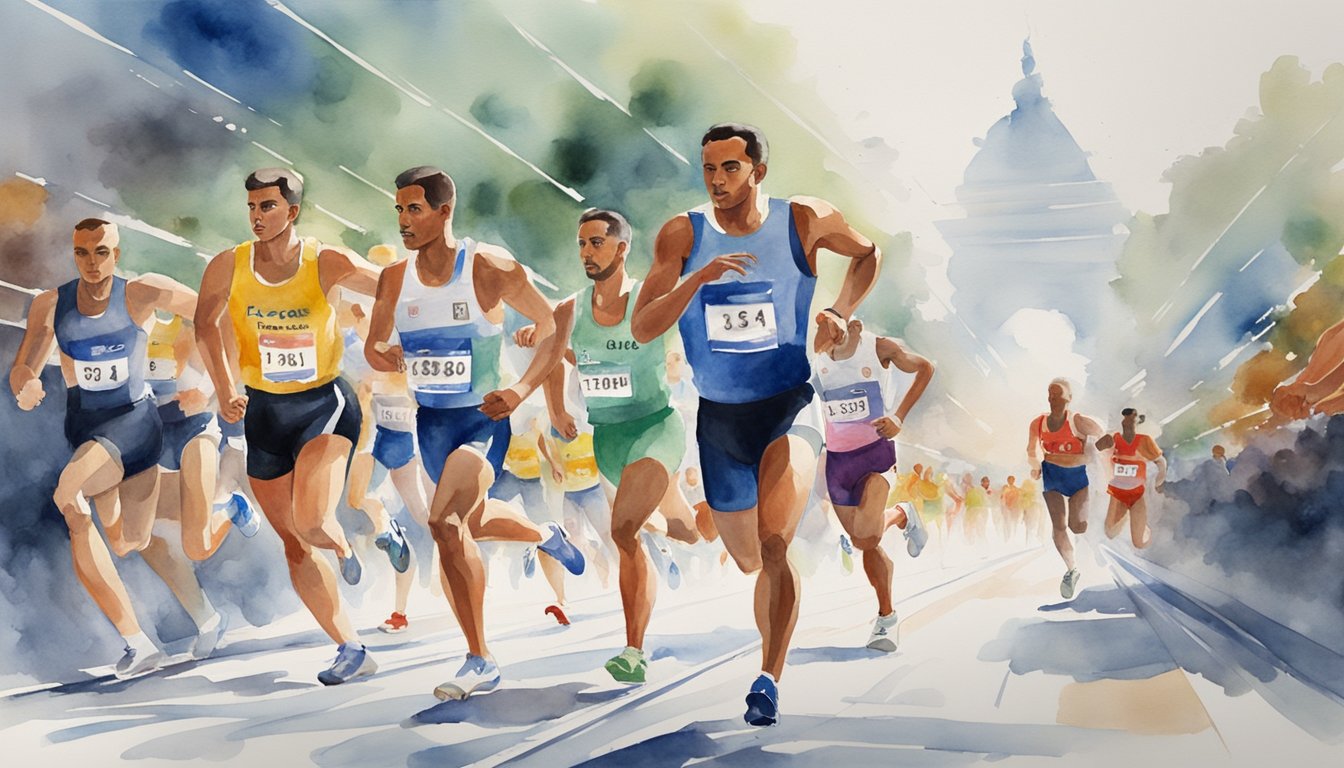Walking as a sport might seem unusual today, but it was once a celebrated and competitive activity known as pedestrianism.
Governing bodies began to establish rules and standards for these events, creating a structured and organized sport.
In the late 19th century, pedestrianism started to transform, with official associations forming to manage competitions and ensure fair play.
These governing bodies played a crucial role in turning casual walking into a respected sport with a dedicated following.

The historical roots of pedestrianism trace back to 18th and 19th-century Britain and Ireland, where it was a popular spectator sport.
It often featured at fairs, similar to horse racing.
The formation of rules and associations gave pedestrianism legitimacy and helped it gain prominence.
Pedestrianism eventually evolved into modern racewalking, which remains an Olympic event today.
Modern competitions in pedestrianism have set the standard for racewalking, maintaining the spirit of the historical events.
The governing bodies still oversee the sport, ensuring it remains fair and competitive.
This transformation shows how pedestrianism has retained its place in the world of sports, thanks to the efforts of these organizations.
Key Takeaways
- Pedestrianism was once a popular spectator sport with official rules.
- Governing bodies established standards for fair play and competitiveness.
- Modern racewalking evolved from historical pedestrianism events.
Historical Development of Pedestrianism
Pedestrianism, also known as competitive walking, has undergone significant transformations.
From its early days of wagers and professional races, it has evolved into a formalized modern sport recognized globally.
Early Practices and Professional Pedestrianism
In the 19th century, pedestrianism gained popularity in Britain, especially through the feats of individuals like Captain Robert Barclay, who famously completed a thousand-mile walk in one thousand hours.
Such events often involved significant wagering, drawing large crowds and media attention.
Professional pedestrianism saw athletes like Edward Payson Weston and Ada Anderson become famous.
Weston was renowned for his long-distance walking abilities, while Anderson’s endurance feats captivated audiences.
Competitions like the Long Distance Championship of the World highlighted these athletes’ prowess, making pedestrianism a widespread spectator sport.
Modern Racewalking Evolution
Modern pedestrianism evolved into what is now known as racewalking, a discipline governed by strict rules.
The heel-to-toe rule mandates that one foot must always appear to be in contact with the ground, distinguishing racewalking from running.
Key figures like De Witt and Goulding played crucial roles in refining the techniques and popularizing racewalking in athletics.
By the late 20th century, racewalking became a recognized Olympic sport, showcasing advances in technique and training.
Today, modern racewalking continues to attract athletes worldwide, maintaining a legacy tied back to its pedestrianism roots.
This evolution underscores the sport’s rich history and enduring appeal.
Pedestrianism in Urban Planning and Regulation
Pedestrianism plays a vital role in molding the structure and governance of urban landscapes, influencing how cities integrate walking into daily life.
Key aspects include design integration, legal frameworks, and community impact.
Integration in Modern Urbanism
Urban planning has increasingly focused on walkable cities.
Emphasizing pedestrian movement, this approach integrates thoughtful street-level design to ensure easy and safe pedestrian access. Density and a functional mix of residential, commercial, and recreational spaces encourage walking.
Cities deploy various pedestrianisation initiatives, such as creating car-free zones and expanding public spaces.
Urban walking is bolstered by a well-planned built urban form that includes accessible and interconnected access networks linking key areas to public transport hubs, further enhancing walkability.
Legal and Social Considerations
The governance of pedestrian spaces involves a blend of urban policies and community-engaged planning.
Laws regulating pedestrian zones aim to prioritize public transport and facilitate safe pedestrian movement while maintaining functionality for all users.
Behavioral design and nudging techniques encourage walking by making it a convenient and appealing choice.
Social considerations include ensuring equitable access to pedestrian amenities and promoting community well-being through urban walking-friendly environments.
By embedding these principles in urban policy, cities not only enhance mobility but also foster social interaction and community engagement.
For those looking to improve their physical endurance for pedestrian activities, refer to endurance building for pedestrians.
Additionally, mastering proper walking form ensures a safe and efficient walking experience.
Modern Competition and Governance in Pedestrianism

Modern racewalking has evolved significantly, with structured rules and organized competitions.
Governing bodies at both international and national levels play crucial roles in maintaining standards and ensuring fair play.
Racewalking and Athletics Governance
Racewalking has become a recognized event under the broader umbrella of athletics.
As a modern equivalent of historical pedestrianism, racewalking is now included in events like the Olympics and World Championships.
The International Association of Athletics Federations (IAAF) sets detailed rules for competitions, ensuring athletes adhere to techniques that distinguish walking from running.
In the United States, USA Track & Field (USATF) oversees racewalking events, setting national standards and guidelines.
Similar organizations in countries like Australia and Canada ensure that the sport is regulated according to local needs.
The focus is on maintaining endurance and technical proficiency, crucial for athletes competing at high levels.
Roles of International and National Bodies
International bodies like the IAAF are pivotal in governing pedestrianism events worldwide.
They are responsible for setting and enforcing rules, organizing major events, and promoting the sport globally.
They ensure consistency across competitions and maintain standards for judging and athlete behavior.
National bodies, such as Athletics Canada and Athletics Australia, adapt these international standards to fit their respective contexts.
They organize local and national events, providing platforms for athletes to compete and improve.
These bodies also play a significant role in athlete development, mentoring, and anti-doping measures, which are critical for the sport’s integrity.
Cash prizes and recognition in media, including major outlets like the New York Times, have helped in the revival and popularity of these competitions.


